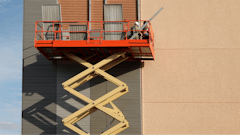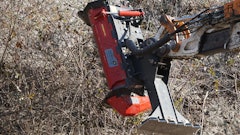Refinishing very old or poorly maintained wood floors requires some special procedures. The first step is an inspection of the wood to determine the nature of the problem. Some wooden floor boards become "cupped," meaning the edges are raised, creating a dip -- or cup -- in the center of the board. According to Brian Strickland, director of rental sales at Clarke, division of Alto U.S. Inc., this condition is a result of an increase in moisture and could indicate a widespread moisture problem in the house that could require the help of a professional to correct. On the other hand, "crowned" floor boards are caused by a decrease in moisture. In this case, the edges of the floor boards have shrunk, causing the center to be raised or crowned.
When cupped or crowned floor boards are present, it's necessary to take special care when refinishing. The goal is to flatten the boards by sanding them level. "Very old cupped and crowned wood floors may need a more aggressive abrasive to start the sanding process," says John Goddard with Essex-Silver-Line. "Sand paper comes in 12 and 16 grits, which are very coarse. If the 20-grit (which is carried in most stores) will not level the floor or remove the finish, then one of these two grits may be the answer."
| RELATED ARTICLES |
| The floor care expert |
He continues, "Another method is cutting at a 45-degree angle vs. sanding with the grain of the wood. Because you are sanding across the grain of the wood, you must resand the floor (with the grain) with the same grit of paper to remove the cross grain scratches. So if you cross cut with 20 grit, you must cut the floor with 20 grit with the grain afterwards."
Strickland notes, "With a poorly maintained floor, the person refinishing must use a drum sander and an edger, as orbital sanders are not aggressive enough to adequately sand floors in poor condition."


























